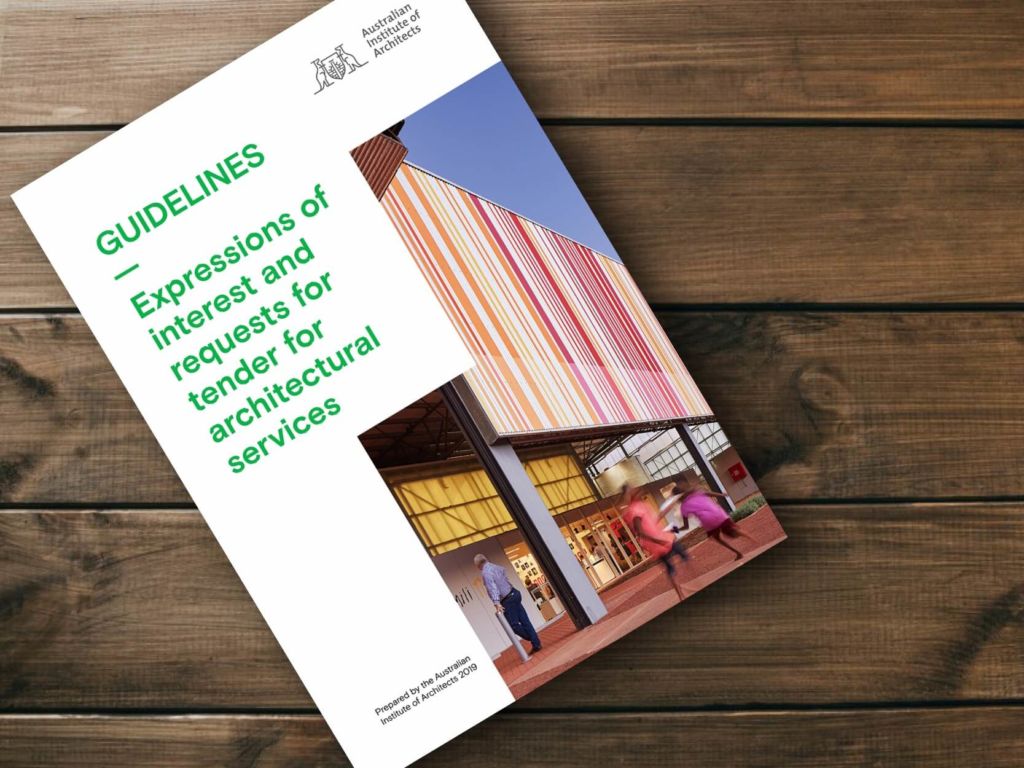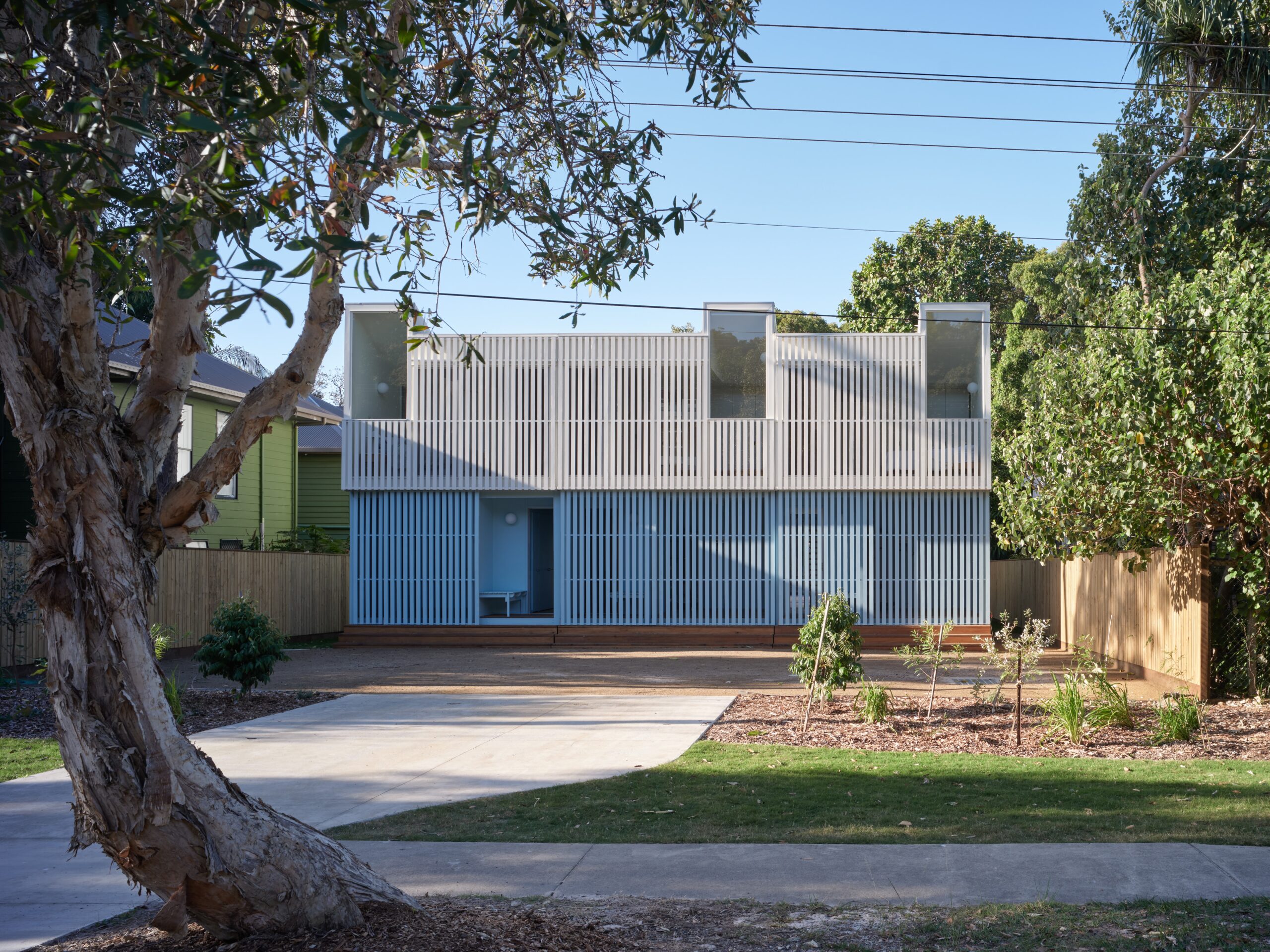Policy &
Advocacy

Policy and Advocacy
YOUR PUBLIC VOICE FOR ARCHITECTURE
We are working to raise Australia’s design standards through policies, reforms, and active engagement with the community, allied professionals, and all levels of government.
Our advocacy work takes many and diverse forms – from heritage listing nominations to major government submissions, from industry symposia to public campaigns. Underpinning all these activities is a robust set of policy positions.

Key Campaigns

From cladding/ACPs to inadequate registration; from self-certification to inequitable risk allocation in contracts; the state of Australia’s construction industry is worrying, and the solution complex but the simple reality is the need for urgent regulatory reform.
Our focus with regard to building regulation has always been and remains on four key aspects within the profession’s areas of expertise:
- quality
- safety
- regulatory reform and
- compliance.
We must protect the safety of our communities and return confidence to the sector.

We have developed a set of Guidelines for EOI and RFT for architectural services following research into best practice EOI and RFT methods in public sector and educational institutions that commission architectural services.
The objective of the guidelines is for potential clients to review their own EOI and RFT methods and documents and align them with best practice to enable an effective and efficient process that maximises the potential for high quality built outcomes and reduces bidding and assessment costs for all.

We launched our Hands off Anzac Hall campaign on 7 November 2018, opposing plans to demolish this award-winning building.
The Australian War Memorial is hell-bent on demolishing Anzac Hall as part of its extravagant $500 million redevelopment plans.
As architects, we are passionate about preserving Australia’s heritage and honouring our national history, nowhere more so than the extraordinary service and sacrifice of the servicemen and women. Destroying such an investment – of effort, culture, and family memories – is a waste and mark of disrespect.
Climate change is accelerating, and we need immediate, ambitious action to counter its impacts.
The Intergovernmental Panel on Climate Change (IPCC) has made the stakes clear: without drastic cuts to emissions, we risk dire consequences for our planet. While Australia has committed to a general 43% reduction in emissions from 2005 levels by 2030, current global pledges simply aren’t enough to hit net-zero by 2050, meaning it’s time for nations to step up and lean in.
Collaborating with the Department of Climate Change, Energy, the Environment, and Water, the Institute has introduced the Embodied Carbon Curriculum, a crucial step in educating the sector.
In 2024, the National Climate Action Sustainability Committee presented expanded targets to the National Council, including milestones for the National Construction Code up to 2040.
By mid-2024, a draft roadmap will be developed to guide the profession towards meeting these targets, fostering further education and capacity building.
The DBP Act and Regulation are a key part of the NSW Government response to the Shergold Weir Report. They’re aimed at overhauling the building and construction industry to restore public confidence and ensure quality and safety outcomes.
We’re working hard in the background to liaise with government as the reforms roll out, and to develop comprehensive resources to support members.
From cladding/ACPs to inadequate registration; from self-certification to inequitable risk allocation in contracts; the state of Australia’s construction industry is worrying, and the solution complex but the simple reality is the need for urgent regulatory reform.
Our focus with regard to building regulation has always been and remains on four key aspects within the profession’s areas of expertise:
- quality
- safety
- regulatory reform and
- compliance.
We must protect the safety of our communities and return confidence to the sector.
We’ve developed a set of guidelines for Expression of Interest (EOI), Requests for Tender (RFT), for architectural services and a Code of Novation and Deed of Novation for Novated Design and Construct (D&C) procurement.
Informed by research into best practice methods, the objective of the EOI and RFT guidelines and templates is for potential clients to review their own EOI and RFT methods and documents and align them with best practice to enable an effective and efficient process that maximises the potential for high quality built outcomes and reduces bidding and assessment costs for all.
The National Novation Research has informed the development of the Code and Deed of Novation. The aim of this has to been to recalibrate the settings for novation so that building quality is not diminished by novated D&C procurement.
The Victorian Building Planning and Heritage Legislation Amendment Bill 2022 will make a number of changes to the Architects Act 1991 which regulates the Architects Registration Board of Victoria (ARBV).
Clause 88 of the bill overhauls Section 47 of the Architects Act which sets out the current 10-member board’s composition and appointment process.
We need your help to support a campaign by emailing or speaking with your lower house (Legislative Assembly) or upper house (Legislative Council) member.
The DBP Act and Regulation are a key part of the NSW Government response to the Shergold Weir Report. They’re aimed at overhauling the building and construction industry to restore public confidence and ensure quality and safety outcomes.
We’re working hard in the background to liaise with government as the reforms roll out, and to develop comprehensive resources to support members.
From cladding/ACPs to inadequate registration; from self-certification to inequitable risk allocation in contracts; the state of Australia’s construction industry is worrying, and the solution complex but the simple reality is the need for urgent regulatory reform.
Our focus with regard to building regulation has always been and remains on four key aspects within the profession’s areas of expertise:
- quality
- safety
- regulatory reform and
- compliance.
We must protect the safety of our communities and return confidence to the sector.
We’ve developed a set of guidelines for Expression of Interest (EOI), Requests for Tender (RFT) and Code of Novation for architectural services.
Informed by research into best practice methods, the objective of the EOI and RFT guidelines and templates is for potential clients to review their own EOI and RFT methods and documents and align them with best practice to enable an effective and efficient process that maximises the potential for high quality built outcomes and reduces bidding and assessment costs for all.
INSTITUTE POLICY & ADVOCACY STATEMENTS
The Institute’s policy platform covers a range of issues relevant to the profession and to the built environment in the interest of promoting more liveable and sustainable communities.
Key policies are listed below.
Policies relating to awards and prizes can be found on the awards page.
Affordable Housing Policy
Housing is a basic human need and universal human right, and in the rapidly expanding cities and towns of the twenty-first century, there is a critical need for more flexible and diverse housing solutions. New housing stock needs to be integrated with transport and social infrastructure and much greater diversity beyond simple models of homogenous suburban boxes or regimented apartments.
In the face of social and demographic change, growing economic inequality and global issues such as climate change, the architectural profession offers the design and problem solving skills to deliver more affordable, dignified and accessible housing, reducing both upfront and ongoing costs. All financial levers to make housing more affordable for owners and renters need to be regularly examined for their effectiveness.
THE POLICY
The Australian Institute of Architects endorses the following:
- The design and problem solving skills of architects are crucial to the provision of affordable and accessible housing in Australia
- Mandated targets for social and affordable housing and incentives for flexible and diverse housing types
- Housing that is affordable, sustainable, and of high amenity achieved through clever design strategies, including smaller, energy-efficient dwellings; cost-effective, space efficient and quality controlled mass housing; and the adaptation of existing housing stock to accommodate multi-generational families, and support ageing-in-place
- A focus on multi-residential developments and urban consolidation as the sustainable and affordable solution to the increasing demand for housing in dense urban environments
- Investment in design quality and mandated use of architects for medium and high density housing projects nationally
- Moving Australia towards net zero carbon emissions for the housing sector by 2050.
Download our Affordable Housing Policy
May 2017
Buying Local Policy
The Australian Institute of Architects calls upon State and Federal Governments to mandate a majority of shortlisted architects be Australian when undertaking design competitions for publicly funded projects.
Australian culture – Australian architects reflect our culture and tell our stories.
This requirement will ensure the vibrancy of the Australian architectural profession and support the growth of high value knowledge based jobs within Australia.
The Institute is concerned that Australian governments, in some recent design competitions for important publicly funded projects, have shortlisted a majority of overseas architects. In one recent public project, five of the six selected competition entrants were led by overseas architects.
Architecture is a global profession and the Institute supports architects working internationally. Many of our members have been very successful in exporting architectural services overseas and the Institute looks for ongoing support from government in support of architects earning export income. However, in regard to publicly funded projects for our important civic buildings, public open spaces and community infrastructure, Australian Government agencies should match international practice. A majority of countries undertaking shortlisted design competition processes for their public projects actively mandate local architectural content.
Adopting this policy ensures fair and open architectural selection processes that welcomes overseas architects, when deemed appropriate to projects of significance, yet ensures a majority of competitors are Australian architects – benefiting the Australian community and supporting local employment.
THE POLICY
The Australian Institute of Architects endorses the following:
- Recognition that the Australian architectural profession provides innovative design leadership both locally and internationally
- Support for the retention of a strong Australian architectural skills base
- Recognition in Government procurement of the role of good design in maximising economic benefits and creating a rich legacy of civic buildings and urban spaces
- Fair and open procurement practices that do not favour overseas architects over Australian architects
- A majority of Australian architects be included in short listed design competitions for publicly funded projects*
- Strong government support for the promotion and export of Australian architectural services overseas.
* For this purpose, Australian architects are defined as firms having a majority of Australian partners or directors (to be refined) .
Download our Buying Local Policy
November 2018
Competitions Policy
While there is growing recognition of the intrinsic, long-term value of design, options for the procurement of architectural services are expanding, and the roles and responsibilities of all key players in the design and construction process are undergoing constant change.
An architectural competition, when conducted appropriately, can generate a broad range and high level of innovation in design solutions. However, if the competition process is flawed, there can be significant negative outcomes for all participants – sponsors/clients, entrants, jurors and advisers. There is therefore a need for clarity, consistency and equity in the conduct of architectural competitions as part of the procurement process.
We’ve established a detailed policy on architectural competitions, clearly articulating a set of high level principles and performance requirements that represent our position on good practice in the conduct of architectural design competitions in Australia.
Download our full Competitions Policy
This policy is supported by two additional resources to assist those proposing to run an architectural competition:
- Model Conditions for an Architectural Competition
- Guidelines for the Conduct of Architectural Competitions
For further information relating to Architectural Competitions, including requests for Institute endorsement for your competition, please contact: archcompetitions@architecture.com.au.
April 2015
Gender Equity Policy
The Australian Institute of Architects aims to continuously improve its operations and its approach to member engagement and guidance, based upon acknowledged best practice principles. By adopting a comprehensive and ethical approach, the Institute aims to ensure that it engages fairly and equitably with all its members, staff and other stakeholders, whether male or female, in a positive, respectful and constructive manner. Equally importantly, the Institute aims to assist the whole architectural profession to do the same.
There has been enormous change during the past century in the roles and status of women in society generally. Discrimination against a person on the basis of gender is illegal. However, legal constraints on gender-based discrimination have, for most practical purposes, been limited to instances of overt and intentional discrimination. Many systemic, often unintended and largely invisible effects continue to impact on the participation and progression of women within the Australian workforce, and specifically within the architecture profession.
The study Equity and Diversity in the Australian Architecture Profession: Women, Work and Leadership offers extensive evidence that, within the architecture profession, many women participants are being compelled or encouraged to leave the profession, or are discouraged from returning to it after a career break. The study confirms that the participation rate of women in the profession, particularly at mid-career and late-career points, is disproportionately low compared to the number of women graduates in architecture. It also identifies that the number of women owners/principals of architectural practices is disproportionately low when compared to the number of women architects in the profession.
This policy aims therefore to establish a set of policy principles to ensure the Institute and its members are aligned in valuing and exhibiting principles of fairness and equity, which lead to the provision of equal opportunities, rights and benefits to all men and women engaged within the architectural profession, and to eliminate gender-based impacts on the participation and progression of women within the profession.
Download the full Gender Equity Policy and principles
Sep 2019
Heritage Policy and Advocacy
The importance of heritage in our built environment is well established. A heritage item may be significant for aesthetic, historic, social, spiritual or technical reasons. Even where a building’s heritage significance is recognised, the usefulness and long term viability of the structure (physical and financial) remain important considerations.
The Australian Institute of Architects believes that at all levels of government, policies and funding are inadequately delivering the potential benefits to the broader community of heritage conservation initiatives. It is important that more rigour is applied to the listing of heritage buildings and places and that adequate funding and resources are available to assist owners of important structures.
The architectural profession has a responsibility to contribute to the conservation and understanding of the built environment. Creativity allied with design skills and an appreciation of the original are required for successful conservation and adaptive re-use.
Download our full Heritage Policy
2008
NSW Heritage Register
The NSW Chapter runs a strong program of heritage advocacy and at its heart is the Register of Significant Buildings in NSW, focused on 20th century architecture. Over 70 years, many members and staff have contributed to developing this asset as a key advocacy tool and historic account of the state’s built environment. While the Register has no statutory weight, it enjoys credibility and informal authority of judgement with local government as well as architects, heritage bodies and the general public as an information resource and adjudication of architectural merit.
Download Register of Significant Buildings in NSW (Apr 20)
Register of 20th Century Significant Buildings in Victoria
The Victorian Chapter of the Australian Institute of Architects established a register of notable 20th Century Architecture following a comprehensive survey carried out by Graeme Butler & Associates in 1983. The Victorian Heritage Committee recently undertook the task of examining and updating the list, noting buildings which have now been demolished and adding buildings from Docomomo and previous award-winning projects. Whilst the register has no statutory weight, it enjoy credibility and informal authority of judgement with local government as well as architects, heritage bodies and the general public as an information resource and adjudication or architectural merit.
Download Register of 20th Century Significant Buildings in Victoria (Apr 20)
Indigenous Housing Policy
Despite commitments from various state, territory and federal governments, the standard of Indigenous housing and essential infrastructure remains well below that available to the non-Indigenous population. As well as building more housing for Aboriginal and Torres Strait Islander communities, and better maintaining existing stock, housing decisions must reside with local communities and job creation must be valued equally to timely and economic delivery. Architects can make a significant contribution to these priorities.
THE POLICY
The Australian Institute of Architects endorses the following:
- A strong Indigenous voice in the creation of housing policy for Aboriginal and Torres Strait Islander communities, to ensure community ownership of the decisions that affect the lives of Aboriginal and Torres Strait Islander peoples.
- Meaningful community decision making power in the procurement of housing, to ensure the best fit for purpose outcomes, and to obtain community benefit beyond the immediate goal of ‘bricks and mortar’.
- Management of construction stages of housing delivery so that Indigenous employment and training are equal outcomes to economic and timely delivery.
- An acknowledgement of the social determinants of health and the role that housing plays in fostering educational attainment, employment opportunities and general wellbeing.
- Effective and timely maintenance of housing, using local resources, to minimise overcrowding by keeping more houses available for occupation.
- The use of architects in the housing design, documentation and construction, to ensure that the design intent and detailing is delivered.
- Development of a diversity of dwelling types and tenancy options to meet the needs of a diverse population and to provide economic options to Aboriginal and Torres Strait Islander Peoples that are available to the non Indigenous population.
- Evaluations of the housing process, including post occupancy evaluations of the final product following occupation, to ensure that policies, designs and processes can be improved.
- Management of the construction stages of housing delivery so that quality construction is an equal outcome to economic and timely delivery, to provide Aboriginal and Torres Strait Islander peoples with housing of equal quality to the non-Indigenous population, and to create a robust housing stock that requires minimal maintenance.
Download our Indigenous Housing Policy
May 2017
Multi-Residential Standards Policy
Australia is a highly urbanised country and its population is growing dramatically with the large proportion of that growth expected in existing urban centres. The most effective way of housing more people in our cities and regional towns is to plan for greater density within the current urban footprint. This increase in density and population must be accompanied by minimum quality standards that require architects and developers to design and build dense, multi-residential buildings that provide a good quality of living for residents, and suitable public amenity. Both of these things are important in creating sustainable communities.
The architectural profession are experts in delivering good design and are crucial to the delivery of quality multi-residential buildings that provide places with open space, liveability, and equitable public spaces.
THE POLICY
The Australian Institute of Architects endorses the following:
- Increased density by the provision of multi-residential buildings that meet the complex demands of housing a number of people in different dwelling configurations and sizes.
- A building and planning framework that encourages multi-residential developments with connections to local amenities and services, health, education, employment and public transport and that delivers community aspirations.
- Adaptation and re-use of existing buildings, including under-utilised heritage places for residential use.
- Legislated development standards and performance metrics that deliver quality internal and external amenity for medium and high density living.
- Design quality guidelines providing advice on how the standards can be achieved.
- Mandated use of qualified professionals such as architects in the design of multi-residential buildings.
- Design review panels for review by architects with experience in the design of multi-residential buildings, which are part of the assessment process.
Sustainability Policy
Urgent action is needed as we face the challenges presented by climate change. The commercial and residential building sectors offer significant potential for achieving deep cuts in greenhouse gas emissions by 2050. This potential can be realised by reducing energy demand and increasing the energy efficiency of buildings.
Policy frameworks must be established to achieve greater energy and resource efficiency in the building sector and to facilitate innovation in building design and procurement. Incentives to encourage the alteration, retrofitting and rebuilding of our current building stock to achieve more sustainable outcomes are needed now.
The architectural profession, as a key player in the development of the built environment must continue to show leadership. The Australian Institute of Architects advocates a range of actions for government, its members, the design and construction industry and the broader community that it believes will drive the necessary changes.
Tertiary Education Policy
Architecture plays a crucial role in sustaining and enhancing the wellbeing of individuals, families and societies. The architectural profession plays a major role in shaping all aspects of the built environment and in the conservation and development of cultural values.
TERTIARY EDUCATION POLICY
The Australian Institute of Architects endorses the following:
- Holistic architectural education as the essential foundation of the profession.
- The highest standard of architectural education through accredited schools of architecture and ongoing CPD.
- Australian schools of architecture must be in an internationally competitive position with regard to standards of education, resourcing and research.
- Australian architectural education must respond to the international context and prepare students for successful practice within Australia and abroad.
- Collaboration between education providers, regulatory bodies and the profession towards maintaining and developing architectural education standards.
- Robust and independent professional accreditation of tertiary level architectural programs as a key component of broader professional registration processes.
Universal Access Policy
The Australian Institute of Architects (The Institute) believes that ensuring a high level of accessibility within the built environment for people of all abilities must be a matter of priority for governments and the community as whole.
Most Australians will experience a form of disability at some stage of their lives as a part of the normal human life cycle. Physical and non-physical barriers within the built environment can have a substantial impact on freedom of movement and therefore freedom of choice. Policies designed to ensure universal access within the built environment are essential, particularly in light of Australia’s ageing population.
Governments must continue to work toward ensuring universal access for all citizens. Legislated uniform standards for accessible public and private housing are necessary and universal housing provisions should be included in planning schemes. Architects should, in co-operation with the broader community, work toward the elimination of barriers to equitable access with the built environment.
Download our full Universal Access Policy
2008
Work Experience and Internships Policy
The Institute acknowledges the value of work experience, internships or trial work to architecture students and graduates. Such opportunities are a direct way for students and graduates to get a foot in the door and secure employment and in specified circumstances these arrangements may be unpaid. These arrangements can be legitimate for educational and vocational purposes and can benefit the industry in the long term by building more comprehensive knowledge and skills. Within the profession, employees need to be aware of their rights and employers need to be aware of their responsibilities under the Fair Work legislation.
WORK EXPERIENCE AND INTERNSHIPS POLICY
The Australian Institute of Architects endorses the following:
- All members of the architecture profession – students, graduates and registered architects – should be supported, valued and paid fairly.
- Vocational work placements should be entered into only if they are genuinely:
• Undertaken as a requirement of an Australian-based education or training course and
• authorised under a law or administrative arrangement of the Commonwealth, state or territory and
• entered into only where no employment relationship exists. - If a work experience placement or internship is used to determine a prospective employee’s suitability for a job, that candidate would be considered an employee for the trial period and must be paid the applicable Award rate.
- The main benefit of the arrangement should be to the person doing the placement.
- If a person is performing productive activities or if their activity benefits the employer, they would normally be deemed to be an employee and would be entitled to be paid the applicable Award rate.
- All unpaid internships, work experience or similar arrangements must be genuine and must comply with the Fair Work Act 2009.
Policy and Advocacy News

Prefabricated Coastal Home Scores Honours at Greater Brisbane Regional Architecture Awards
The Australian Institute of Architects (RAIA), Queensland Chapter, welcomes the Crusafulli Government’s announcement of a clear plan of action on the 2032 Olympic and Paralympic Games. The choice of Victoria Park as a major venue needs great care and consideration.
Australian Institute of Architects urges government to tread carefully in Barambin – Victoria Park
The Australian Institute of Architects (RAIA), Queensland Chapter, welcomes the Crusafulli Government’s announcement of a clear plan of action on the 2032 Olympic and Paralympic Games. The choice of Victoria Park as a major venue needs great care and consideration.

Message from the SA Chapter – Why free design services are a risk
Design expertise is a core component of the services provided by architects. The knowledge, experience, critical thinking and creativity required to develop a design is what sets the profession

Introducing the 2025 SA Chapter CaST Taskforce
The SA Chapter of the Australian Institute of Architects is proud to announce the 2025 Culture and Strategy Taskforce (CaST) members — a team of eight dedicated professionals who will

Building a More Inclusive Future: The Institute’s Response to the Building Commission of NSW’s “Liveable Housing Requirements in NSW – Discussion Paper”
The Australian Institute of Architects has submitted a comprehensive response to the NSW Building Commission’s “Liveable Housing Requirements in NSW – Discussion Paper,” a crucial step towards creating more accessible and

Peak Design and Planning Institutes Welcome 2032 Plan – with eyes on next step of stitching the venues into the City and Region
A consortium of Queensland’s leading design and planning institutes have welcomed the State Government’s Games delivery plan, marking a crucial step in shaping the state’s future. Together the Australian Institute
Policy Submissions
National and local submissions to government
We actively engage with federal, state and territory governments, local government, the opposition and government departments to promote the strategies, policies and processes needed to create a built environment that can sustain us into the future. This includes formal responses and submissions to various government and department consultation papers and parliamentary inquiries.
Contact us
National Policy Unit
Australian Institute of Architects
PO Box 3373
Manuka, ACT 2603
2a Mugga Way
Red Hill, ACT 2603
P: +61 2 6121 2100
E: policy@architecture.com.au





